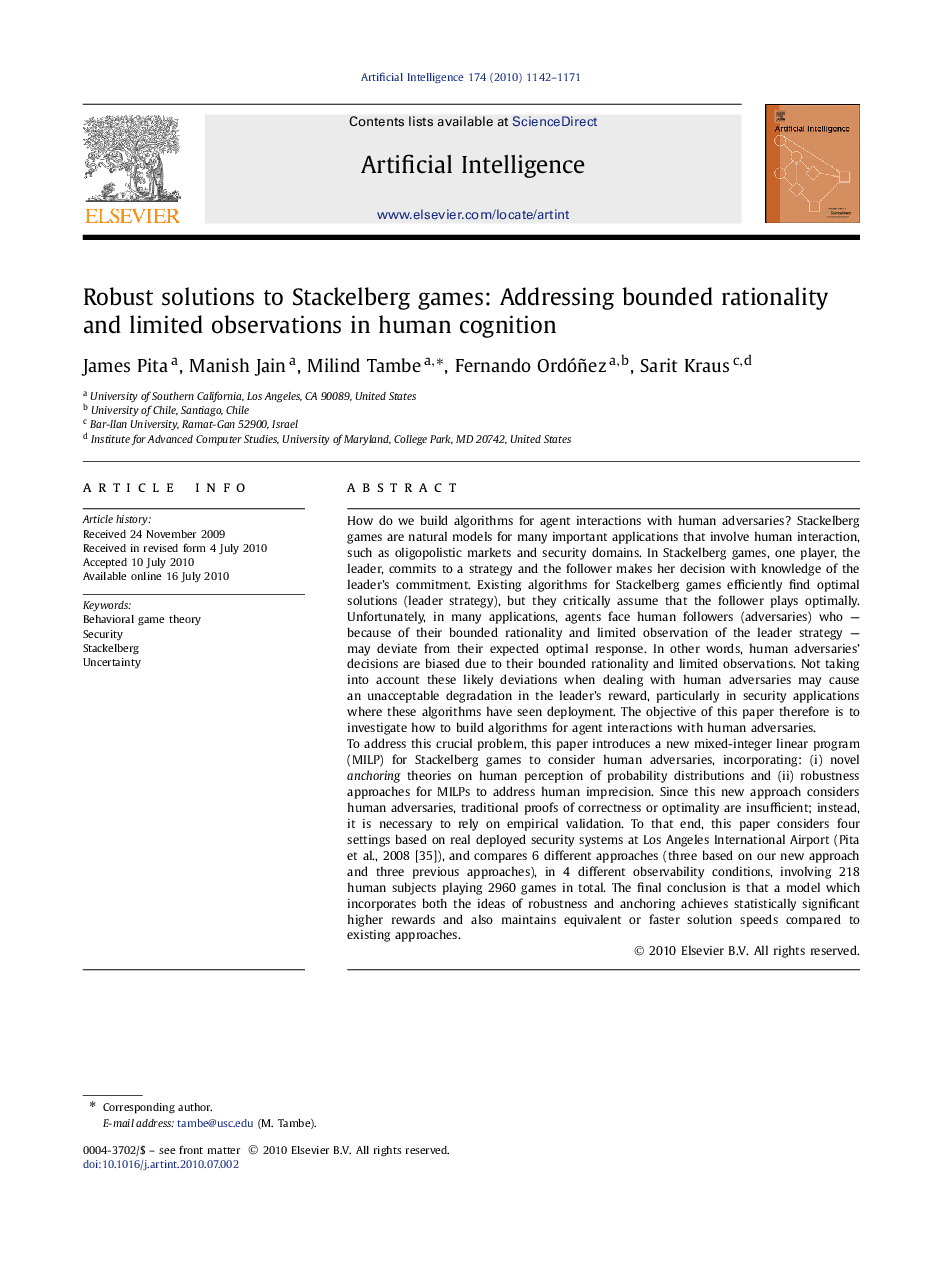| Article ID | Journal | Published Year | Pages | File Type |
|---|---|---|---|---|
| 10320261 | Artificial Intelligence | 2010 | 30 Pages |
Abstract
To address this crucial problem, this paper introduces a new mixed-integer linear program (MILP) for Stackelberg games to consider human adversaries, incorporating: (i) novel anchoring theories on human perception of probability distributions and (ii) robustness approaches for MILPs to address human imprecision. Since this new approach considers human adversaries, traditional proofs of correctness or optimality are insufficient; instead, it is necessary to rely on empirical validation. To that end, this paper considers four settings based on real deployed security systems at Los Angeles International Airport (Pita et al., 2008 [35]), and compares 6 different approaches (three based on our new approach and three previous approaches), in 4 different observability conditions, involving 218 human subjects playing 2960 games in total. The final conclusion is that a model which incorporates both the ideas of robustness and anchoring achieves statistically significant higher rewards and also maintains equivalent or faster solution speeds compared to existing approaches.
Related Topics
Physical Sciences and Engineering
Computer Science
Artificial Intelligence
Authors
James Pita, Manish Jain, Milind Tambe, Fernando Ordóñez, Sarit Kraus,
